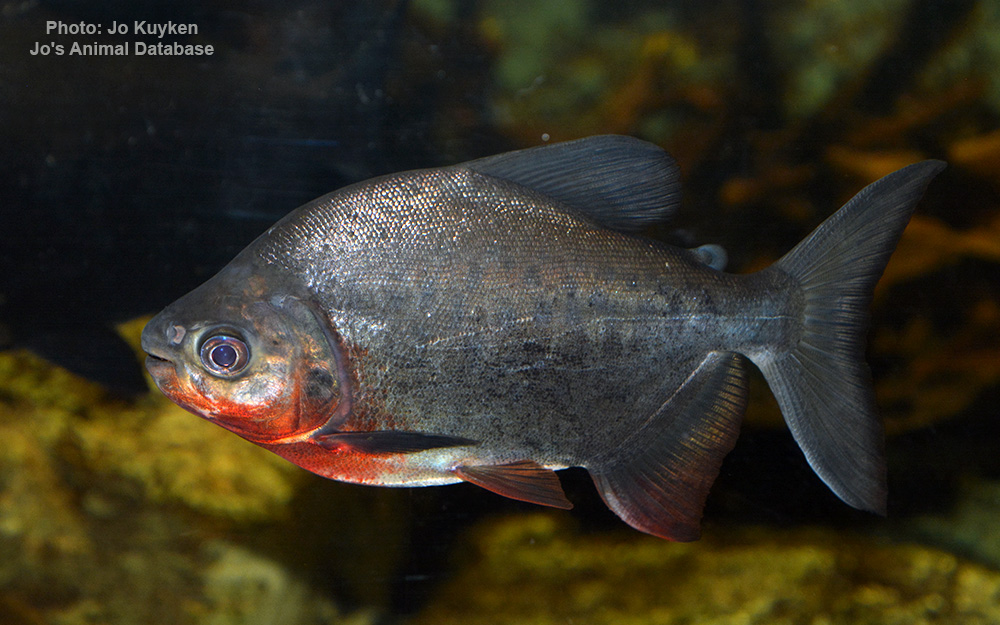Red-bellied pacu
(Piaractus brachypomus)

Image source: Jo's Animal Database
Classification
General data
Piaractus brachypomus, the pirapitinga, is a large species of pacu, a close relative of piranhas and silver dollars, in the serrasalmid family. It is native to the Amazon basin in tropical South America, but it formerly included populations in the Orinoco, which was described in 2019 as a separate species, P. orinoquensis. Additionally, P. brachypomus is widely farmed and has been introduced to other regions. In South Florida they are invasive in rivers, canals or lakes.
As with a number of other closely related species, P. brachypomus is often referred to as the red-bellied pacu in reference to the appearance of the juveniles. This has resulted in a great deal of confusion about the nature and needs of all the species involved, with the reputation and requirements of one frequently being wrongly attributed to the others.
It mainly feeds on fruits, seeds, and nuts, but it is opportunistic and will also take zooplankton, insects, crustaceans and small fish, especially in the dry season. In general, more seeds are able to pass undamaged through the pirapitinga than the tambaqui, meaning that the former is overall a more efficient seed disperser.
Piaractus brachypomus can reach up to 88 cm (2.9 ft) in length and 25 kg (55 lb) in weight.
Juveniles have a distinct red chest and stomach, and are easily confused with the carnivorous red-bellied piranha (Pygocentrus nattereri), but the two can be separated by their teeth, which are molar-like in Piaractus brachypomus. This similarity is believed to be Batesian mimicry by P. brachypomus in an attempt of avoiding predation by other species. Adults lack the bright red chest and belly, and resemble the tambaqui (Colossoma macropomum), but can be separated by several meristic and morphological features: The pirapitinga has a smaller adipose fin that lacks rays, as well as differences in teeth and operculum. The pirapitinga also has a more rounded head profile (less elongated and pointed).
The other member of its genus, P. mesopotamicus, can be distinguished by its smaller scale-size and the higher number of lateral scales (more than 110).












